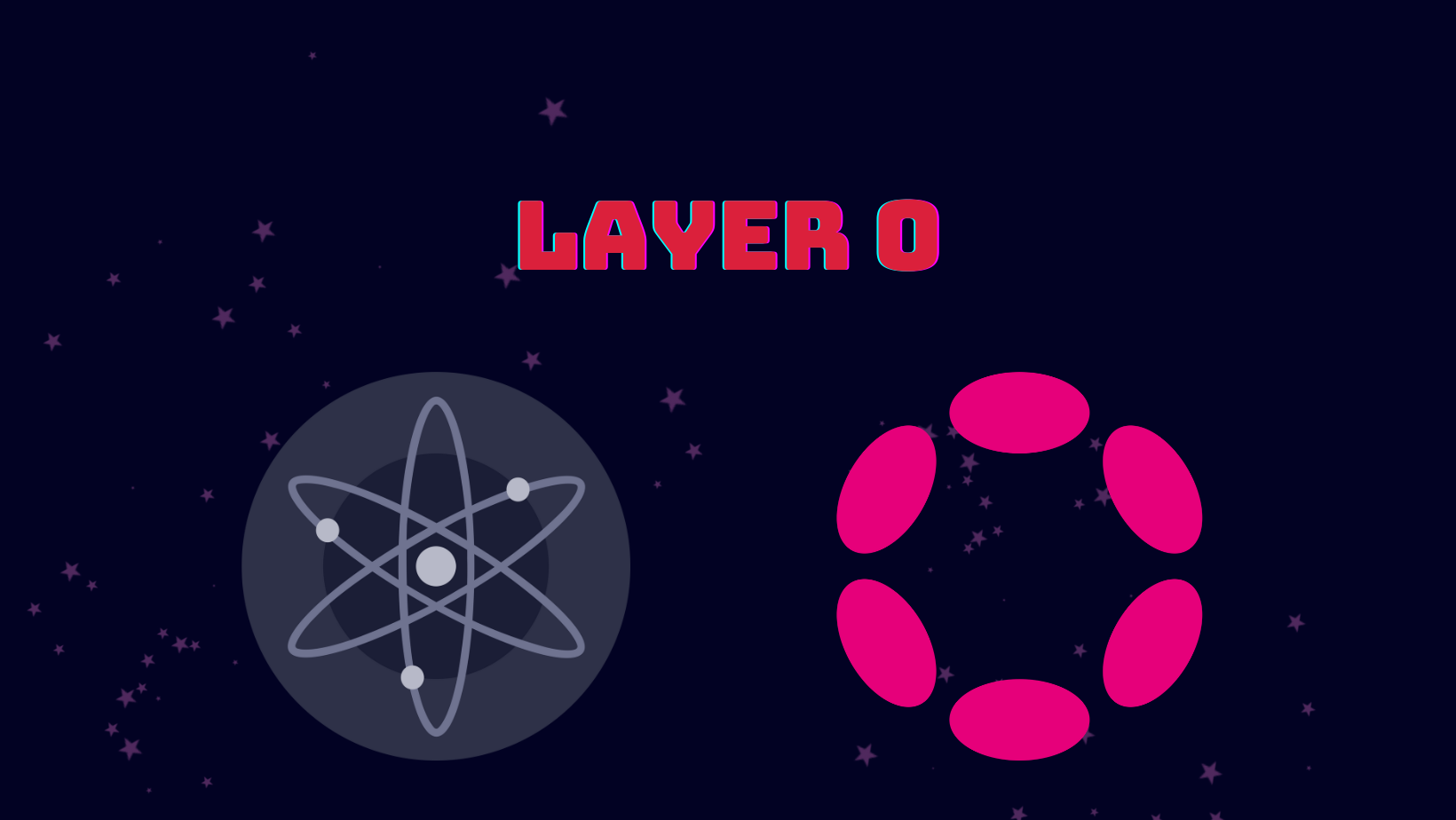
Layer 0
Blockchain infrastructure is referred to as Layer 0 technology. While Layer 1 blockchains exist for Dapps to be built upon, Layer 0 technology exists for blockchains themselves to be built upon.
Some Layer 0 projects also have their own functional Layer 1 network, and some only serve to create other chains. Some others only offer modular bits and pieces of blockchains.
A blockchain can be split up into Application, Network, Data Availability, and Consensus layers.
Why Layer 0’s?
Scalability is an issue plaguing the web3 space. One reason for that is that there are many monolithic blockchains, meaning the consensus, application, and other layers are interwoven and designed for the average case.
Application specific blockchains are much more efficient at their designated tasks. For application specific blockchains to be practical, they (and the web3 space in general) must be sufficiently interoperable.
Interoperability can be achieved by taking a different, modular approach to designing blockchains. With the right tools, chains can be built to be interoperable by default. Layer 0 projects aim to provide those tools, whether they be shared security, consensus, cross-chain communication, or software development kits.
Cosmos
Layer 0 for adoption. Anyone can build a chain.
Each chain provides its own security.
Cosmos’ IBC (Inter-Blockchain Communication) allows for chains in the cosmos ecosystem to safely and instantly bridge to each other. Special bridges called peg-zones are needed to interop with chains that have probabilistic finality. IBC is sort of like a chain using its own execution layer to run a light node for the consensus of other networks that it aims to interop with.
Cosmos offers an infrastructure of combined Network and Consensus layers to be built upon. An application layer can be created in any language and attached to Cosmos’ underlying infrastructure via its ABCI (application blockchain interface).
Cosmos SDK allows for new Application layers to be spun up quickly and with flexibility. Permissioned and private chains can also be built with Cosmos SDK, even though the main chain/Hub uses public proof of stake consensus.
Tendermint is the first iteration and is being updated.
Started with Go but is now multi-language.
Polkadot
Layer 0 for security. Relay chain provides security for all parachains. This infrastructure is similar to the kind of sharded network that Ethereum aims to create with the Surge.
Limited number of parachains; not as open as Cosmos.
Thanks to the shared security, interchain communication extends beyond tokens. XCMP (cross chain message passing) means different parachains can interact with each other’s smart contracts directly.
Substrate is the software development kit used to build new parachains. Substrate supports any language compatible with WASM.
Parathreads offer the ability to create a chain and not have to worry about 24/7 maintenance.
Celestia
Celestia is a modular solution. Celestia on its own is not a full blockchain. It only offers consensus and data availability; a layer 2 offering execution is required for a fully functional system.
Celestia and other modular blockchains are more true to the idea of infrastructure as a service, as they don't even provide an end to end service.
Alternatives
Rather than building an interoperable ecosystem from the ground up, some wish to make existing L1s interoperable. Thorchain and Succinct Labs aim to do this.
Thorchain offers native L1 asset swaps in a decentralized environment. The only other way to achieve this is with a CEX.
Succinct Labs aims to use zk-SNARKs to reduce consensus to the point that networks can run light clients for each other's consensus models on their own Execution layers. Similar in concept to IBC.
References:
https://v1.cosmos.network/intro

